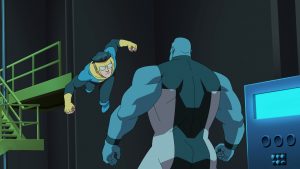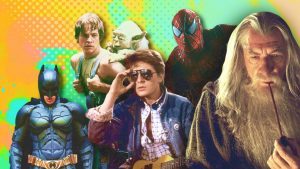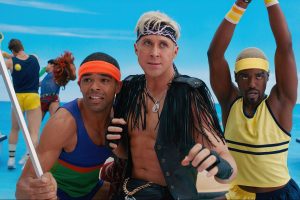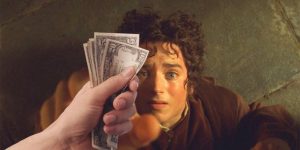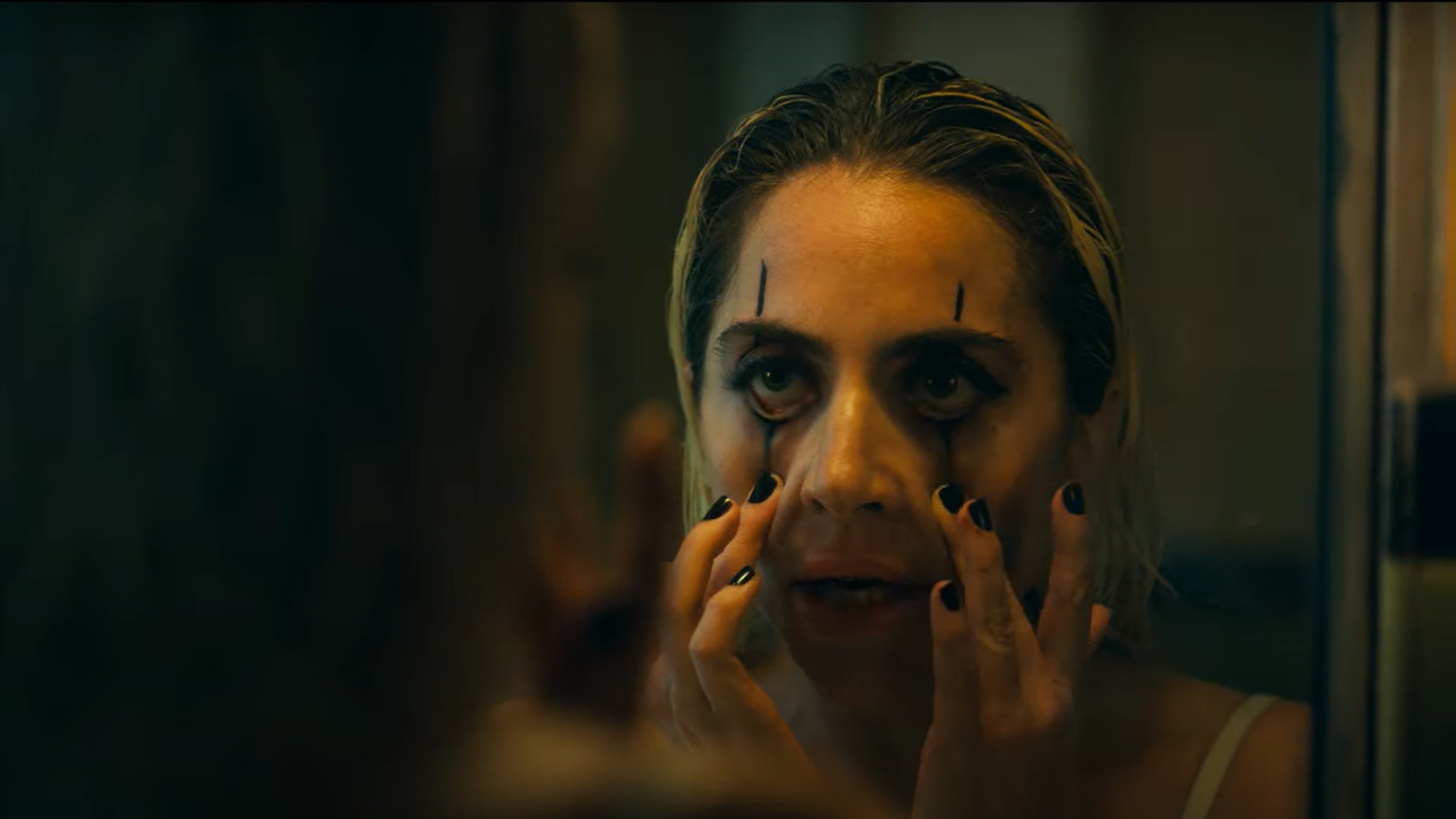
A lot can change in five years. Only half a decade ago, Todd Phillips’ ambitious and daring attempt to reboot the DC character Joker into a Travis Bickle antihero wasn’t only a hit with moviegoers, but a phenomenon. That film opened to $96 million in its first weekend and legged out to grossing more than $1 billion worldwide, the most ever earned by any R-rated film up to that time.
Cut to October 2024, and we don’t even have to wait for the second weekend to know how thoroughly Joker: Folie à Deux was rejected by its target audience. The opening weekend alone was a scene of devastation with the movie’s first day earning an estimated $20 million. By itself, that number might seem like a lot until you compare it to the first film grossing $39 million in the same timeframe—49 percent more despite inflation having gone up considerably in the interval. Yet that $20 million gross still proved higher than Saturday’s estimated $11 million. And when your opening box office tallies go down by virtually 50 percent from Friday to Saturday, you know you’re in real trouble. In the end, Joker 2 is estimated as of press time to have only grossed between $39 and $40 million… what the first movie made after a day, in other words.
The simple reason for this failure is born out in the various metrics used to track audience reaction to the film. While Rotten Tomatoes’ audience score is a notoriously unreliable and non-scientific poll, the fact its 32 percent matches identically with the comic book movie’s critics score of 32 percent must have sent a chill down Warner Bros. executives’ spines. It portended the more reliable audience tracking surveys of CinemaScore and PostTrak. The former of which said audiences on Friday gave the movie a dreaded “D” grade, the lowest score ever awarded to a comic book movie. For context Morbius got a “C+” and Green Lantern earned a “B.” PostTrak, meanwhile, reported that polled audiences collectively rated Joker 2 with half a star. For comparison, the first Joker earned four stars on PostTrak.
So, yes, while it’s still early in the film’s theatrical cycle, it’s fair to say most audiences are walking out unhappy with Joker: Folie à Deux. And when compared to Joker’s $96 million debut, Joker 2’s $40(ish) million opening is all the bleaker since word-of-mouth will almost certainly doom the sequel to be front-loaded in its box office performance—a sequel that depending on who you ask cost anywhere between three and four times the budget of the first movie’s reported $55 million price tag.
There is going to be a lot of finger-pointing and theorizing in the days and weeks to come about why this supposedly sure-thing sequel flopped, including at the usual suspects of “audiences don’t want to go to the theater anymore after COVID.” Yet we have to say that increasingly this dog doesn’t hunt, at least when it comes to sequels or new installments in beloved franchises. Only a month ago, Warner Brothers’ Beetlejuice Beeteljuice surpassed all expectations and opened to an astonishing $111 million more than 35 years after the original movie’s release.
The more likely culprits are the sins of Joker 2, real and perceived, turning away its target audience. Alas, this probably begins with the perception that the demo of older skewing males who made up the first film’s most devoted fanbase—and who were, indeed, a reported 60 percent of ticket-buyers for the sequel this past weekend— generally seem to dislike musicals. While a more four-quadrant film like WB’s own Wonka last year could be a hit and “stealth musical” (the marketing really downplayed the singing and dancing Timothée Chalamet would get up to), audiences who reveled at the first Joker’s dark edginess might simply have shuddered at the sight of their killer clown also wanting to croon Richard Rodgers. Though they didn’t mind when he danced like a buffoon last time…
However, we would argue the problems extend far beyond making Joker 2 a musical. The bigger issue might be that it barely qualified as a Joker movie in the first place. In fact, the film could be viewed as a repudiation of how many people interpreted the first film, including some of its loudest comic book movie-loving fans. They celebrated the last film online as some kind of meaningful portrait of society… or at least of a charismatic supervillain coming into his own. While that first movie was also a character study drama, it built slowly toward the elements comic book fans are familiar with in regard to the Joker character: the purple suit, the green hair, the clown makeup, and murderous antipathy toward his fellow man.
Joker 2 walks all of that back, suggesting that Joaquin Phoenix’s Arthur Fleck was really just the victim we were initially introduced to: a mentally ill man failed by his family, community, and society. The sequel then watches him slip to a tragic, gruesome end. As we’ve noted in reviews and elsewhere, it is a creatively bold approach, right down to emulating the melancholic ennui of many Stephen Sondheim musicals (Arthur did sing “Send in the Clowns” in the first movie, remember?). But the actual approach to the sequel made for a rather tedious and repetitive courtroom drama with a nasty streak. But whether dull or intentionally subversive, it ultimately denied its target audience anything they might expect from a Joker movie.
In retrospect, it’s almost baffling that this approach to a sequel would be greenlit by a major studio save for the fact that the first film, which was a much more inexpensive risk, grossed a shocking $1 billion. Suddenly, what should have seemed like a gamble became a “safe bet,” and the result was Phillips getting carte blanche to reach for a gravitas some might say was beyond his grasp.
Still, one should give Warners some credit for taking that risk. As with allowing writer-director George Miller the chance to make the excellent Furiosa movie how he wanted earlier this year, despite the fact that the previous Mad Max: Fury Road only did adequately at the box office nine years earlier, the studio got behind a filmmaker and let him make the film he wanted.
Unfortunately, the lesson to the industry is to probably avoid that kind of folly as much as possible going forward. Giving directors or writers a long leash might lead to something like Christopher Nolan’s success with Batman, or Phillips’ with the first Joker for that matter, but you could also end up with… Joker: Folie à Deux, a Hollywood franchise film so pretentious that its title is in French.
We’d argue, though, there remain smarter lessons to be learned here than just saying “no” to auteurs. Recent reports that studios are beginning to “assemble a specialized cluster of superfans” to have a hand in marketing is a bit worrisome, in fact. If you play strictly to what fans think they want, you wind up with products as soulless and creatively craven as Star Wars: The Rise of Skywalker (a film, which we might add, still earned $300 million less than the controversial but more artistically fulfilling The Last Jedi).
Rather than reining in creatives on franchise movies, perhaps it is better to first determine what should be a franchise? Phillips’ Joker was a medium-budgeted drama (an almost extinct creature from a different time) which happened to breakout well past reasonable expectations. Obviously, its greenlight and subsequent success came from Phillips making it Batman-related, but it still was never designed to lend itself to a sequel or expanding “universe.”
Unfortunately, conventional wisdom suggests you always follow up a hit these days. And therein may lie the real problem. Perhaps a better use of $200 million might have been investing in four medium-budgeted gambles like Joker, IP or otherwise, that could also surprise audiences? Otherwise, you may end up with a contrived sequel that pleases no one, and that leaves you with nothing to laugh about.
The post Joker 2’s Massive Box Office Failure Offers Dark Lessons in Hollywood appeared first on Den of Geek.

